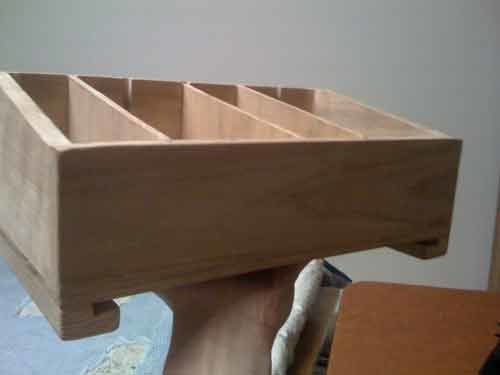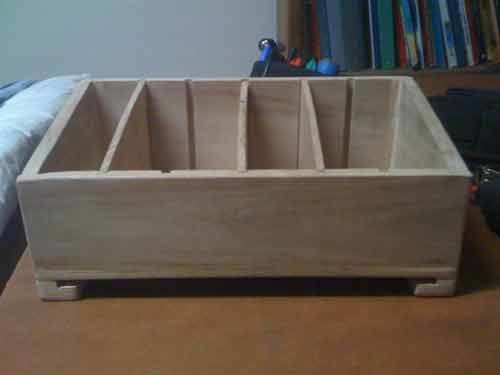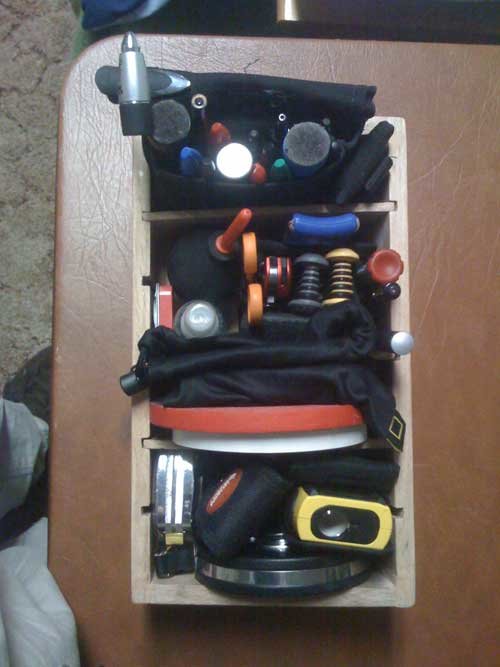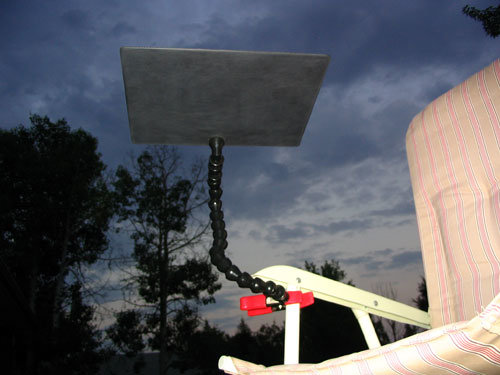-
Posts
75 -
Joined
-
Last visited
Posts posted by Jason Anderson
-
-
There's not even room for the DP's meter. Or his water bottle. Or his cigarettes. Oh, the lighter, too. And his phone and keys. Oops, wallet too while he's sitting on the dolly... ;)
Yeah, suppose it would be polite to leave a spot open. I may add some velcro to one side so I can make some room, transfer a few items outside the box.
-
Like the shot with the trees turning colors while she is on the bike. Alot of cutaways to soap dispenser, towels, sink, etc, sort of boring things that take away from story.
Jason
-
Thought of something to add. There is a light measuring sensor built into the Iphone that helps dim the screen down or up for easy viewing, based on the amount of light. I wonder if there is a way to tap into it?
-
A friend is currently working on a camera logging program, it still has a long way to go, but I'll let you all know when its finished
-
Good lord, that box is LOADED!
I was just so excited to have a front box, I stuffed it full of everything. :lol:
-
any of you driven off with the gas nozzle still in the tank?
-
-
I have one or two of the simple Kern C-mount stereo lenses, not the projection lens. I did some trial work in 3-D about 15 years ago. It is quite fascinating.
Now, if you're on the chase for such optics, try to get hold of the "big" Bolex-Kern stereo lens which is the one with a circular housing front. In it there are two sets of prisms that allow shooting closer and close-up. In a third position you have no prisms in front of the openings so that the lenses look parallel forward. The paired lenses are 5.6 mm apart (two simple coated Yvar triplets 12.5-2.8, fixed focus at 3 m or 10 ft.). The stereo base is 64 mm. One set of prisms will allocate the view on 3½ feet, the other provides for 2 feet.
Domestic stereo lenses were given the inscription Kern-Paillard Stereo, those for export Bolex Stereo.
A protruding 11 mm diameter bushing must be set on the camera turret instead of the washer under the central fastening screw.
The project started in 1950. First devices came to the shops in 1953.
Thank you for the info
What do you think about syncing two bolexs?
-
IIRC you put the attachment on the camera when you shoot. The film is processed normally (I think) and when you project it, you put the same attachment on the projector. There is some info that thingie in Andrew Alden's Bolex Bible. If you want more info I could look it up for you.
Cheers, Dave
Thanks, that makes sense, but if I wanted a digital copy as well, may be more tricky.
-
Thanks for the responses, yeah, there is a lens attachment that splits the frame into two parts, Does anyone know the work flow for such a setup? http://www.retrothing.com/2006/08/3d_bolex_16mm_m.html
-
I am interested in shooting a 3d film on 16mm, any suggestions as to what cameras I should use or if you know of some titles that were shot on 16mm or 8mm and what technique was used.
jason
-
Jason,
I don't know if this will apply to the HVX, but I did some tests on my Varicam by looking at the maximum dynamic range of the camera using tungsten and daylight and not using any color correction filters on the camera. The Varicam allows one to shoot in FilmRec mode and see the entire dynamic range that the camera can shoot.
The idea behind the test was to see when a single color clipped before the others using a waveform monitor and controlled lighting.
The conventional wisdom was that the camera should always be used in tungsten mode and use the colored filter wheel to correct for daylight (or 85 type filter in front of the lens).
My conclusion was that the camera is at it's optimum between the two color temperatures, but closer to daylight. Setting the camera to daylight mode (for daylight shooting) resulted in slightly less noisy images than tungsten mode with tungsten light. I now shoot the camera in daylight mode for daylight with no filter and tungsten mode for tungsten with no filter.
If the ccd's and color filters are similar for the HVX, then the same advice should apply to your camera.
It would make sense to put the chips native balance somewhere in the middle between tungsten and daylight, thanks for the reply
Jason
-
CCD's don't like warm light. You'll always get a better image with cooler light. How much better, I don't know, but I'm sure someone has performed some tests somewhere along the way.
.
Thanks
-
what is the native preference of the HVX200, will the chip perform better with its native balance?
Jason
-
The red package I used was Red rock micro: matte box and follow focus. The follow focus has a bit of annoying slack in it, the tolerances in the gear box could have been a little better. The lens gear became lose at one point. We ending up just super gluing the lens gear to its pin so it would no longer be and issue. The matte box is good, some of the bolts became lose on the eyebrow.
The battery charger is sort of a piece. We had to constantly monitor it to make sure it was still charging. Also the batteries seem to overheat, and refuse to charge until they cool down. Also the contacts on the battery charger don't seem to always line up perfectly with the contacts on the battery, you really have to finesse it and put the battery charger in the correct position to keep the battery from wiggling. Red is supposed to offer a fix for the charger, the owner of the camera I used hasn't sent theirs in yet.
The 18-50 mm RED lens we used was decent, however the gearing feels rough on the barrel for iris, focal length, focus. I have never seen a lens that felt that rough. The close focus is very good, you can nearly touch the lens.
The RED is fairly heavy after you add on everything, we used a gel bicycle seat cover on the underside for hand held shots, probably somewhere between 35 and 40 pounds depending on your configuration.
We hooked up the monitor with HDMI, I wish there was a better way to secure it to the camera, we tied a knot around the camera handle so the cable would not damage the socket.
Jason
-
Thanks Chris!
I bought some Oak today, trying to find some time to build one
Jason
-
The ron dexter thing is a good example of what I was thinking about. Thanks for the link.
How would you approach this shot: Camera is set up looking towards the entrance to an elevator, an is actor coming down in a cage elevator, the dolly moves towards the actor as the elevator approaches. Focus becomes more and more critical as the dolly approaches, because of the longer focal length lens. The actor does not get off the elevator however, because they continues past the entrance heading down past the level the camera is setup on. We are still dollying forward and see the actor descending through the open cage style elevator.
-
Will people watch movies when there is a severe depression? Food and entertainment stocks are doing alright now, but was there a breaking point during the great depression.
Will a foreign audience continue to watch American media as exclusively as now? As India and China develop, they will begin to have a heavy influence on media. Perhaps learning a foreign language is a way to prepare for the future of cinema.
We agree that digital costs less? Technology could counterbalance the economy slightly.
Jason
-
Just wondering if the thickness really matters? Are you worried about it holding up strength-wise, or light being able to permeate it?
My family owns a plastic company on the east coast, too bad I read this post now....though it does give me ideas to make some funky stuff of my own.
even the thinnest ABS black sheet does not allow light through, yeah it was mostly for strength and then secondly weight.
Well thats handy that your folks have a plastic company! Let us know what you come up with.
-
Finished the French flag.
ended up using a .1 inch piece of ABS plastic, very strong at that thickness.
Detailed steps on Instructables.
-
http://www.coloradoplastics.com/ is going to cut me a black ABS plastic 9x11 sheet, for 10 dollars. Right now I am using a piece of FRP panel ( the fiber glass board found in many budget shower installations. ) I thought about spray painting it black, but by the time I buy the paint and the primer, its going to cost the same as the ABS plastic, which is a stronger material anyways, and is already black.
How thick is a standard flag 1/8th? 3/32nds? , Ill probably go with 3/32nds.
I'll have some pictures up by the beginning of next week.
I am coming in about 50% of the cost of a store bought french flag.
$10 dollars for 9x11 sheet
$1 misc nuts bolts
$2 grip clip
$26 Loc Line/Adjustable Arm
Jason Anderson
-
Shoot with B&W negative film, process it at home, homebrew telecine it, and flip the image polarity in post. B&W negative is a lot more forgiving to shoot and process than either B&W reversal or E6 color.
I've successfully telecine'd some 35mm Looney Tunes with my 35mm KEM telecine. I recorded its Sony machine vision camera's S-video output on my Sony miniDV, and captured the tape into my Avid system. So I've got the backend of the workflow already on-line.
Whats the quality like? There is only one telecine company in town and they do SD 4-4-4 to digital beta tape, no 2k or HD here in denver. I see a KEM on ebay for 2000 right now.
Jason
-
The stuff you liked to from the "Dr." site are actually snap together coolant fittings. Instead of retail, try an industrial supply like MSC (Manhattan Supply Co), Graingers, or McMaster-Carr, www.mcmaster.com. The first and last company I listed will ship items to anyone.
Already bought some from fosters, probably would have been cheaper at mcmasters, thanks for the info.
-
is ISO 200 for film the same as digital?
iso 50 is 2 stops below iso 200 right?
so maybe if I set my nikon for iso 200, and 1/60 shutter, and pull it under by 2 stops
i could go outside and see how things turn out at different F stops, wonder if that would work?
Its based on how much light the objects in your scene reflect, so I can't imagine an average is very useful, maybe some of the shots will come out alright.
From 200 to 50 iso equals 2 stops, yes.
yes, your digital camera is made to emulate the sensitivity like film does for each iso setting.
A film camera with a 180* shutter angle will expose the film 1/48th of a second @ 24fps.
Jason








regular light bulb banned in EU
in Lighting for Film & Video
Posted
Anyone notice that Luxim is creating some very interesting light bulbs, not available to general public yet. http://www.luxim.com/
Basically just microwaves the argon and sodium inside a closed bulb about the size of a tic tac, and a rather amazing amount of light is produced. It is supposed to double the efficiency of LED technology in some cases. And the CRI rating is around 90, so very high quality of light, and not much energy. I think they are daylight balanced by default, but surely we could just burn a different type of gas and produce 3200 some day soon?
Jason